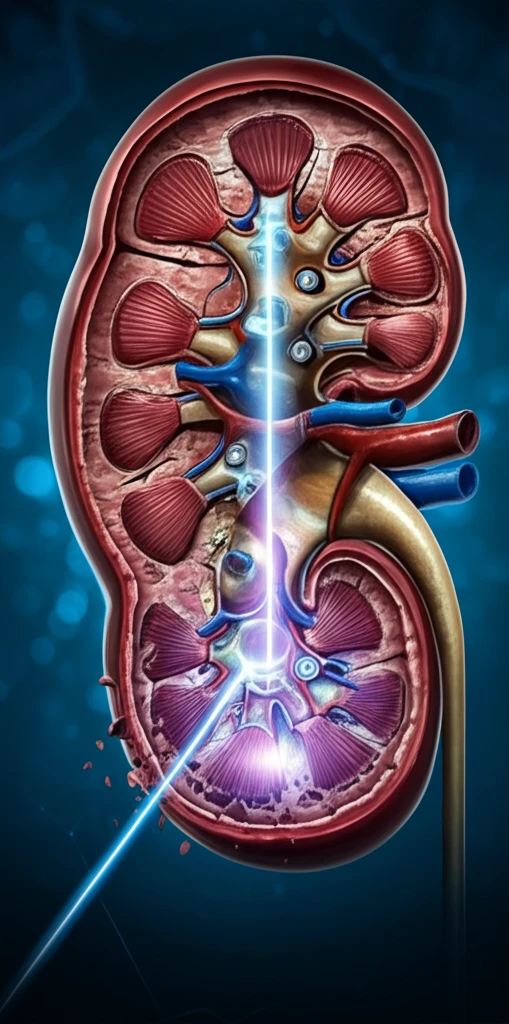
Cutting-Edge Kidney Stone Treatments: How New Tech Can Keep You Stone-Free
"Discover the latest advancements in kidney stone treatment, from Moses laser technology to the innovative Matrioska technique, and learn how these methods are revolutionizing patient care."
Dealing with kidney stones can feel like a never-ending battle. The pain, the doctor visits, and the constant worry of recurrence can significantly impact your quality of life. But there's good news: medical technology is rapidly advancing, offering new and improved ways to tackle this common problem.
Gone are the days of relying solely on traditional methods. Today, innovative techniques and technologies are emerging that promise more effective and less invasive solutions for kidney stone removal. This article will explore two of the most exciting advancements in the field: Moses laser technology and the Matrioska technique.
We'll break down these cutting-edge treatments in plain language, explaining how they work, who they benefit, and what you can expect. Whether you're currently battling kidney stones or simply want to stay informed about the latest options, this guide will provide you with the knowledge you need to make informed decisions about your health.
Moses Laser Technology: A New Era in Laser Lithotripsy

Laser lithotripsy, which uses lasers to break up kidney stones, has been a game-changer in kidney stone treatment. Among different lasers, Holmium-YAG laser is commonly used. Now, Moses technology emerges as an advanced refinement of this method. Imagine a laser that's not just powerful, but also incredibly precise and efficient. That's the promise of Moses technology.
- Increased Efficiency: By optimizing energy delivery, the Moses technology breaks up stones more effectively, potentially reducing the overall treatment time.
- Reduced Retropulsion: Traditional laser lithotripsy can sometimes cause stones to move away from the laser, making them harder to target. Moses technology minimizes this "retropulsion," keeping the stone in place for more efficient fragmentation.
- More Concise Incision: The Moses mode induces a different ablation pattern when compared to the regular mode, leading to a more concise and narrow incision.
- Shorter Procedure Times: More efficient stone fragmentation and reduced retropulsion can lead to shorter, safer procedures and reduced stone re-treatment rates.
The Future of Kidney Stone Treatment
The field of kidney stone treatment is constantly evolving, with new technologies and techniques emerging all the time. Moses laser technology and the Matrioska technique represent just two of the many exciting advancements that are improving patient outcomes and quality of life. As research continues and these methods are further refined, we can expect even more effective and less invasive solutions for managing kidney stones in the future.
